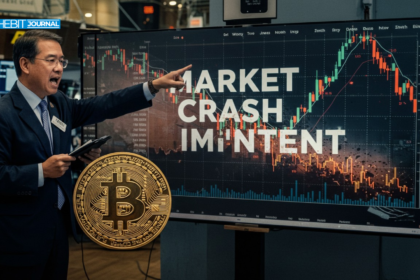Currently, 75% of all Bitcoins have not been moved for more than half a year despite the coin shedding 21% of its value since its record high. It appears that the long-term holders of BTC are treated more and more as digital assets, holding on to their coins during significant price swings. As demonstrated by the “hodl wave” chart by Glassnode, most BTC is still staking in wallets, while short-term holders face constant headwinds due to massive volatility.
Long-Term Investors Hold Steady
According to Glassnode’s analysis, more than 75% of Bitcoin’s circulating supply has not been transacted for at least six months or more. This indicates an emerging group of investors who appear unbothered by recent price declines. As shown by the Hodl wave chart, which tracks BTC based on the time since its last move, by mid-2024, approximately 74% of coins had been relatively inactive. Despite a 21% decline from its peak value, this cryptocurrency has maintained a significant amount of inactive coins.
One possible result of the observed drop in circulating supply is that early investors are choosing to hold their Bitcoin, expecting high future returns. As these coins are removed from circulation, the available supply of bitcoins for trading decreases, potentially leading to an appreciation of value due to increased demand. This relationship between supply and demand is crucial in determining Bitcoin’s sustainability and value proposition.

On-chain analyst James Check noted in an August 19 post on X (formerly Twitter), “given current market trends with a dominance of older coins, one could deduce that these long-term investors are holding their BTC as a store of value, expecting further price increases in the near future”
Short-Term Holders Face Challenges
So long-term holders remain calm, the short-term holders of Bitcoin face a very different picture. According to onchain data, over 80% of BTC held by short-term holders, those who have owned the asset for less than 155 days, are in a loss. These investors bought the bitcoins at earlier higher prices than the current market price, which means they deeply compromise with their money.
The situation with these short-term holders is rather familiar with previous market trends. This pattern, notes James Check, is the same one that played out in 2018, 2019, and mid-2021 when short-term traders flipped bearish to sell their equities and force a bear market. Check cautioned that the same could happen again if short-term holders started selling their coins due to some trigger , which would put Bitcoin in a deeper hole.

This is similar to 2018, 2019 and mid-2021 where many investors were in a state of high anxiety and possibly signalled high risk of panicking in a downward trend-Check observed. The possibility of these behaviors being repeated again brings in the fact of how market psychology plays an essential role when it comes to the cryptocurrencies, since they are prone to drastic changes in response to fear or greed.
Market Sentiment Remains Bearish
The overall market sentiment still remains in the red, and the Crypto Fear & Greed Index currently is at 28, which corresponds to extremely fearful investors. This level of fear has not been observed since last December, pointing that many of the market players are still concerned with what happen to the Bitcoin and other digital assets in a short term basis.
Bitcoin was floating around $60000+ in the late weekend trading but as we write this it stands at $58619. This drop points to the fact that there is always volatility in the market and the fact that bitcoin will struggle to hit new highs again.
The trend of holding by long-term investors and the short-term holders’ problems form a somewhat diverse scenario for bitcoin. Although the reduction of sell offs from long term holders could result in an appreciation of its price, challenges that come in form of pressure from short term holders as well as the general market sentiment present major problems.
A Quick Wrap Up
Long-term holding by investors implies confidence in the Bitcoin market with 75% of all the BTCs inactive for over six months. Since reaching the peak in April, these investors have cut their exposure by 21%, but they are still investing, an indication of Bitcoin permanence as an investment asset. Nonetheless, there is a wide segment of short-term holders who are currently finding themselves with assets they are trading at a loss. While the market adapts to such changes, long-term conviction and short-term volatility will remain significant in shaping the future of Bitcoin. Keep following TheBITJournal and keep an eye on Bitcoin market trends.





























